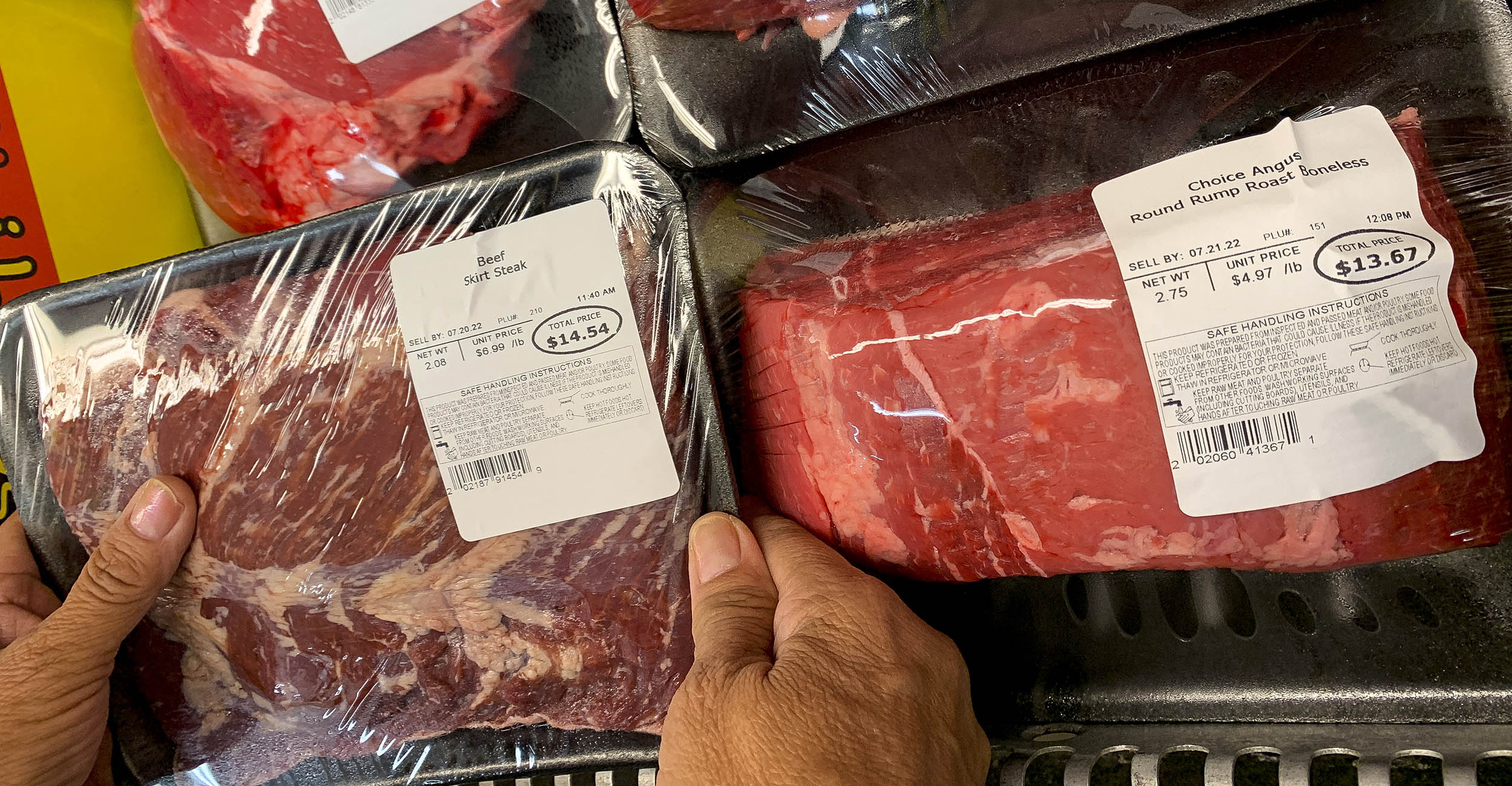
Agricultural News
OSU Research Aims to Save Billions for Beef Industry
Fri, 05 Aug 2022 14:34:54 CDT
 Scientists in the Oklahoma State University Department of Animal and Food Sciences are working hard to stop the waste of billions of dollars of beef each year.
Scientists in the Oklahoma State University Department of Animal and Food Sciences are working hard to stop the waste of billions of dollars of beef each year.
The U.S. beef industry loses $3 billion annually to meat discoloration. When beef is brown on the surface, it is discounted in price, and extensive discoloration leads to people throwing nutritious food in the trash.
Why does meat turn brown?
Most people associate the bright, cherry red color of meat with freshness, but brown discoloration doesn’t mean your beef is bad. The discoloration is simply beef reacting to long-term exposure to oxygen.
When oxygen attaches to the protein myoglobin in muscles, oxymyoglobin forms and gives meat a bright cherry red color. When oxymyoglobin continues to be exposed to oxygen, it turns into metmyoglobin. This process is called oxidation, which causes a chemical reaction similar to apples or potatoes turning brown when exposed to air.
What’s been done?
Gretchen Mafi, professor of meat science in the animal and food sciences department, conducted research using oxygen scavengers, small iron pouches that can be placed inside the bags used for beef retail transportation. The iron pouches remove oxygen, and therefore, lengthen the shelf life of the meat.
OSU scientists did not invent this method of packaging, said Mafi, but they have been testing the method for a private company to determine its effectiveness. In recently completed research, beef maintained its bright, red color for up to 23 days after being packaged with this process.
Along with the research, Morgan Pfeiffer, assistant professor of animal and food sciences, has been studying how long it takes meat to reach varying levels of discoloration and what people consider too much discoloration.
“We’re trying to get it down to the hour when consumers would say they would no longer purchase that meat,” Pfeiffer said.
Ranjith Ramanathan, an OSU meat quality associate professor, has focused his research on a condition called dark-cutters in which beef fails to have a bright red color.
Ramanathan and his research partners asked the question of why the meat of some cattle has a darker color when harvested by looking at protein and metabolite levels in dark cutting beef. They found these levels were different in darker red meat. Glycogen levels and mitochondria, which produces energy, are also different in darker beef compared to brighter red beef.
With this knowledge, producers can track whether specific cattle will exhibit dark meat or bright, red meat.
“Stress, heat extremes, changes in weather and certain management practices can increase dark-cutting incidents, so if you can figure out which cattle are more prone to dark cutting at a genetic level, you can put management practices in place to help with that,” Mafi said.
What’s happening now?
Predicting which cattle are more prone to dark cutting meat with a high level of confidence is something Ramanathan and Mafi are still working toward.
Ramanathan said researchers are continuing to look at these protein and metabolic levels before applying their knowledge at the production level by studying the biological markers of cattle that relate to these differences.
In other research, Ramanathan and his colleagues are trying to determine if there are electrochemical factors that play into the discoloration of beef, pork and chicken by researching the properties in each of these meats that cause different oxygen levels, pH conditions and temperature. In collaboration with the OSU Department of Chemistry, they are also developing electrochemical sensors that can check antioxidant levels in beef extracts to determine if the beef will turn brown more quickly.
Meanwhile, Ramanathan, Mafi and Daqing Piao of the OSU College of Engineering, Architecture and Technology are attempting to develop a method to detect meat discoloration internally before it reaches the surface of the meat. The two scientists and their colleagues will also study the absorption and emission of light within beef products and its association with beef color change to develop storage strategies and other decision-making tools.
OSU Ag Research is Oklahoma's premier research and technology development agency in agriculture, natural resources and the life sciences.
WebReadyTM Powered by WireReady® NSI
Top Agricultural News
More Headlines...





